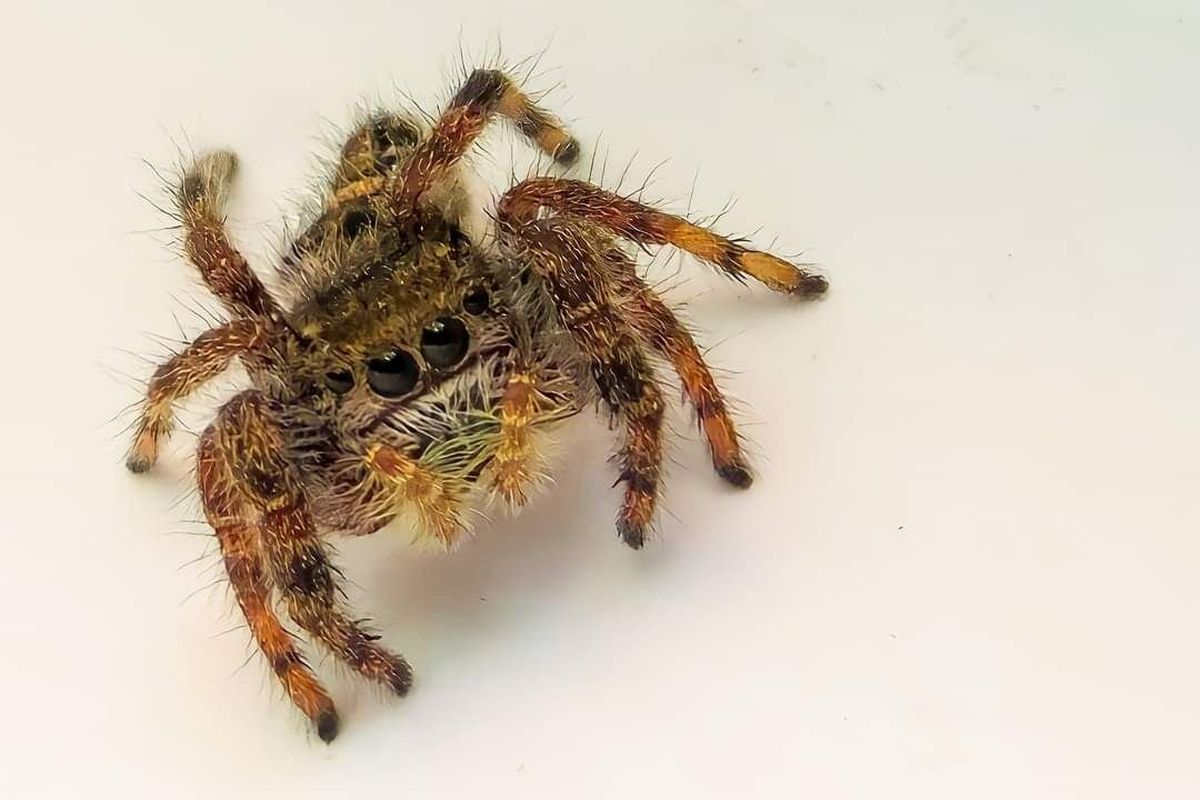Bugging the Northwest: The itsy bitsy spider jumped up the water spout, along came a mosquito and …

Adorable may not be the word that comes to mind when you see a spider. Take a look at this fellow from Yakima and you may feel differently. The tiny jumping spider, with big round eyes, short legs and an entire body covered in fuzz, could have played a role in the animated Pixar movie “A Bug’s Life.”
But there’s far more to these diminutive spiders than cuteness. They pounce on prey like a cat on a mouse. They also see objects as sharply as much bigger animals.
Jumping spiders make up the largest family of spiders, with more than 6,300 species recorded worldwide and 57 in Washington state, according to Rod Crawford, spider expert at the University of Washington’s Burke Museum in Seattle. Although most jumping spiders live outdoors, they occasionally wander into people’s homes, as did the one featured in the photograph that accompanies this story. April Ketcherside took the arachnid’s picture after spotting it in a potted jade plant near a window and then moved it outdoors.
“Jumping spiders are fairly diverse in Eastern Washington,” Crawford said, and without seeing their undersides it can be difficult to identify some of the species. The state’s resident species have different names – Phidippus, Pseudeuophrys lanigera and Habronattus, for example – yet they share unique characteristics in the spider world.
“They hunt actively without webs by using their unsurpassed eyesight,” he said, adding that most spiders have poor vision and use other senses to get around.
Instead of spinning a web and waiting for an insect to get trapped in it, jumping spiders go hunting during daytime. They use those two big front-facing eyes to focus on prey, akin to a pair of binoculars. The spiders’ smaller six eyes, while less visually acute, provide astounding peripheral vision. All together, their eight eyes give them a nearly 360-degree view of what’s going on, researchers have found.
And boy, do jumping spiders live up to their name. Despite their small size – often 0.5 inches or less in length – they can leap a distance of up to 50 times their body length, according to a 2017 study published in the Journal of Arachnology.
With their sharp vision and spot-on pounce, think of jumping spiders as the felines of the invertebrate world. What’s more, “male jumping spiders are also noted for their incredible courtship dances,” Crawford said.
To woo females, they display fancy footwork, wave their two front legs into the air and even wiggle their butts. It’s possible that these show-offy displays let males identify themselves to females without being noticed by predators, said University of Florida entomologist Lisa Taylor, who has documented the frantic mating dance in her research. If not eaten, the best dancer gets the female.
All of which could be happening in your back yard at this very moment. Rest assured, however, it’s a good thing. Jumping spiders in the Evergreen State don’t eat plants, but they keep pesky insect numbers down. Prowling around your grass, petunias and vegetable plants, they pounce on everything from mosquitoes to aphids.
And though jumping spiders may project a penetrating, cartoonlike stare, they want little to do with you. If threatened, they’ll probably jump far, far away.